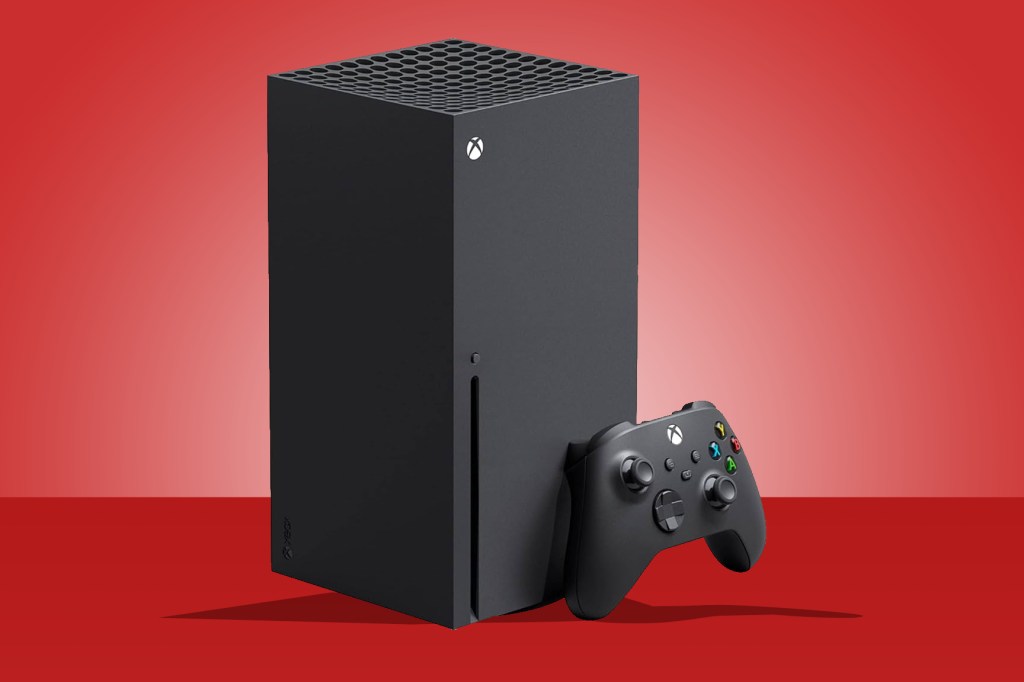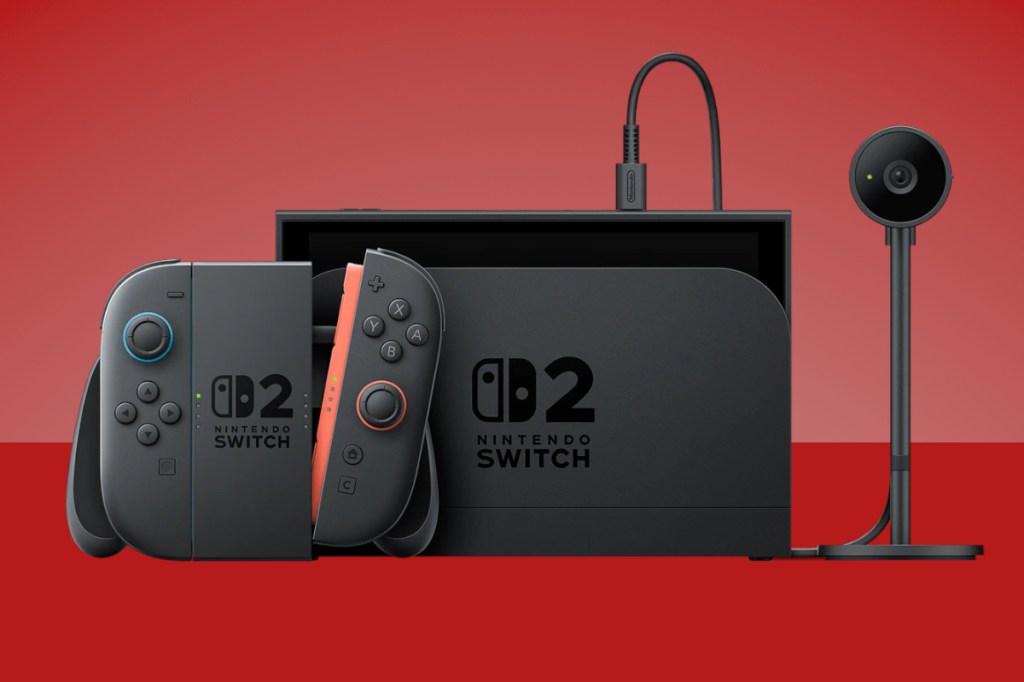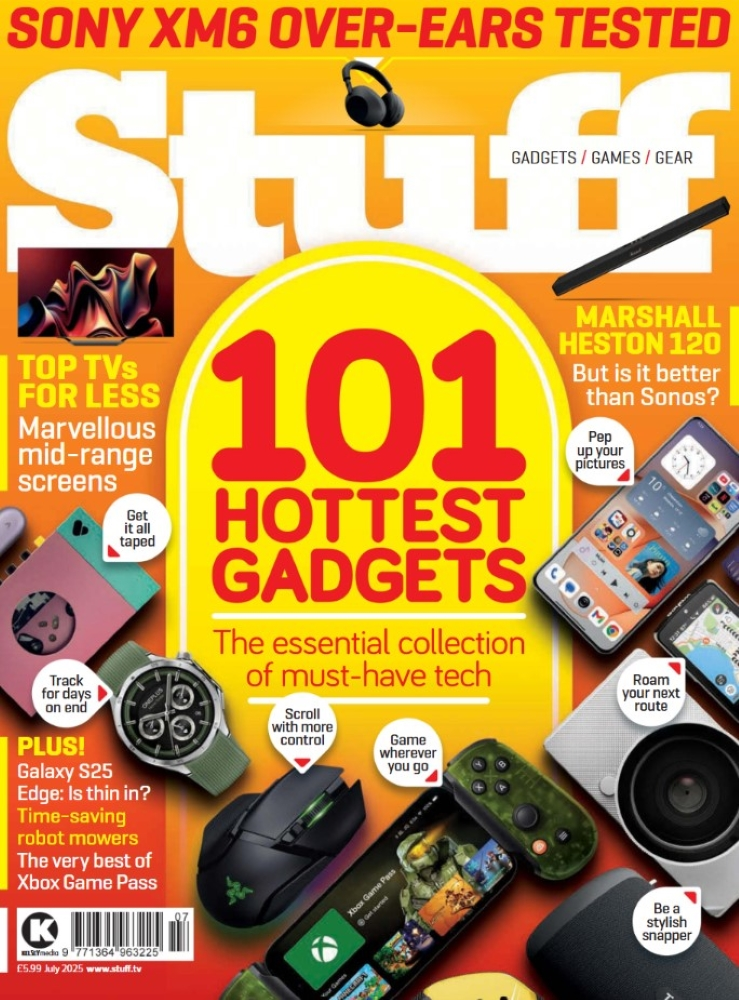Best gaming console in 2025 including Xbox, PlayStation and Nintendo
We've ranked the best gaming consoles available, from Xbox and PlayStation to the Nintendo Switch and beyond—we’ve tested them all. Press start to continue…

What’s the best gaming console? That’s a question gamers have debated for as long as consoles have existed. The truth is, it’s one of the most subjective discussions in the world of technology. But don’t worry – we’re here to help you figure out which one might be the best option for you.
Of course, the answer will depend on your gaming preferences, budget, and who you plan to play with. If you’re after a console for family gaming, your choice will probably differ from one geared toward solo adventures. And if handheld gaming is your thing, we have a guide to the best handheld gaming consoles for that.
No matter what your gaming goals are, we’ve spent countless hours with the latest consoles. We’ve combined our hands-on experience with in-depth knowledge of the gaming world to highlight the best options available. We’ll also walk you through the key details of each console.
In the end, whichever one you pick, you’re likely to be thrilled with your choice. Still, understanding their strengths and weaknesses will help you make the most of your budget.
Why you can trust Stuff: Our team of experts rigorously test each product and provide honest, unbiased reviews to help you make informed decisions. For more details, read how we test and rate products.
Quick list: what’s the best gaming console?
We think the PlayStation 5 (buy now) is the best console overall. It edges out the competition thanks to some great exclusive games that really push the hardware, the PlayStation 5 also has a unique controller in the DualSense, giving you a feeling of more immersion. The console itself has a divisive look, but its system user interface is a delight to use, refining what worked well for Sony consoles before. If you only want to own one console, this is the one to go for.
The Xbox Series S (buy now) is highly affordable for an under-the-TV console, the Xbox Series S is also ridiculously small for what it can achieve. It’ll play all the Xbox Series X games, albeit not in 4K, and Xbox Game Pass makes it a continuing bargain. You’ll need to budget for some external hard drive space to get the most from it, but it’s worth it, thanks to the plethora of Xbox exclusives to catch up on.
The Nintendo Switch 2 (buy now) is best for families thanks to its excellent game library, Nintendo continues its reign as the best option for families. Mario Kart 8 and Super Smash Bros will divide families in the best way. At the same time, the Legend of Zelda offers immersive experiences.
The Xbox Series X (buy now) is a substantial refinement of what worked so well for the Xbox One, the Xbox Series X is the most powerful console around and bundles in Dolby Vision and Atmos support. Game Pass is a great money saver, too.
The Steam Deck OLED (buy now) is the ultimate first-generation Steam Deck, with a display to rival your OLED TV. The handheld PC’s custom-built OS makes it feel like a console in all the right ways. Perfect if you want to access your Steam library with minimal faff.
The Nintendo Switch Lite (buy now) is ideal if you solely want a portable console, the Nintendo Switch Lite keeps costs down while looking cute and allowing you to play Nintendo’s rich catalogue of games.
The best gaming consoles you can buy today:
Best gaming console overall

1. PlayStation 5
Stuff Verdict
With plenty of exclusives to check out, an extensive back catalogue, and a great controller, the PlayStation 5 is a powerhouse of a console.
Pros
- Rock solid 4K/60fps gameplay and very fast
- DualSense has huge potential
Cons
- Storage will fill up very quickly
- Nothing to match the Xbox Series X’s Quick Resume
| PlayStation 5 specs | |
|---|---|
| Internal storage | 825GB/667.2GB usable |
| Optical drive | 4K Blu-ray Drive (disc-less version also available) |
| CPU | AMD Zen 2-based CPU with 8 cores at 3.5GHz |
The PlayStation 5 made quite an impact when it launched in late 2020. Unlike Microsoft’s Xbox Series X, which felt like an evolution of the One X, the PS5’s arrival was more dramatic. With its bold design and innovative features, it’s clear that Sony wanted us to know that this console was different. The standout DualSense controller brings new levels of immersion through adaptive triggers and haptic feedback, setting the PS5 apart from previous generations.
Performance-wise, the PS5 is essentially a high-powered gaming PC in your living room. With a 3.5GHz AMD Zen 2 processor, 16GB of RAM, and a blazing SSD, it delivers fast loading times and 4K gaming at up to 120fps. However, third-party games haven’t always lived up to the promise of consistent 4K/60fps gameplay. Still, Sony’s exclusive titles like God of War Ragnarok and Horizon Forbidden West have wowed us, showcasing the console’s potential.
The design may be divisive, with its striking black-and-white aesthetic and large size, but once we started playing, it won us over. The console’s connectivity is generous, and the ability to upgrade storage is a welcome feature, even if it requires some effort.
After over two years of gaming on the PS5, it’s clear that while it hasn’t been all smooth sailing, Sony’s console still impresses. With its unique design, impressive power, and promise of more great games, the PS5 feels like the best console available right now.
- Read more: Sony PlayStation 5 review
Best Xbox console

2. Xbox Series X
Stuff Verdict
A substantial refinement of what worked so well for the Xbox One, the Xbox Series X is the most powerful console around and bundles in Dolby Vision and Atmos support. Game Pass is a great money saver.
Pros
- Quick Resume is great (when it works)
- Ridiculously powerful
Cons
- 1TB SSD will fill up fast
- Unusual shape wno’t fit in all media centers
| Xbox Series X specs | |
|---|---|
| Internal storage | 1TB NVMe SSD |
| Optical drive | 4K Blu-ray drive |
| CPU | 8x Cores at 3.8GHz Custom Zen 2 CPU |
The Xbox Series X is a powerhouse of a next-gen console that delivers on its promises. We’ve been using it for several years now, and the things we loved at launch are still impressive today. Quick Resume is a game-changer, allowing us to jump between multiple games without reloading, and the SSD makes load times almost non-existent. It’s a beast in terms of performance, and even older games look and play better than ever.
Microsoft’s strategy with the Series X isn’t just about the hardware, though; it’s about expanding the Xbox ecosystem. Game Pass, which has become an integral part of the Xbox experience, continues to be the best value in gaming. With over 100 games and new additions regularly, it feels like the Netflix of gaming, especially with day-one access to first-party titles like Starfield.
While the Series X has plenty of power, we did feel its launch was more of an evolution than a revolution. Microsoft focused on backwards compatibility and future-proofing rather than launching next-gen exclusives. But with the company acquiring major studios, we’re expecting more first-party hits soon.
Overall, the Series X is a quiet, powerful machine that excels in performance and value. It may not have had the flashiest start, but with the steady growth of Game Pass and more exclusive titles on the horizon, it’s a fantastic choice for serious gamers.
- Read more: Xbox Series X review
Best family gaming console

3. Nintendo Switch 2
Stuff Verdict
Nintendo’s most premium-feeling console to date, which may not be a revolution but continues and enhances the hybrid gaming experience in more ways than before.
Pros
- Significant improvements over its predecessor in just about every way
- Beefier games run well thanks to better hardware and DLSS
- Backwards compatibility (if not 100%) with some enhancements
- Noise-cancelling tech for microphone is wizardry
Cons
- Poor battery life
- Expanding storage requires expensive microSD Express cards
- Mouse function not very ergonomic
| Nintendo Switch 2 specs | |
|---|---|
| Display | 7.9in LCD screen, 1920×1080 pixels |
| Storage | 256GB (expandable via microSD Express) |
| RAM | 12GB |
| Battery Life | 2 – 6.5 hours |
| OS | Custom Nintendo OS |
| Dimensions | 116 x 272 x 13.9mm (with Joy-Con 2 attached) 4.5 x 10.7 x .55in (with Joy-Con 2 attached) |
| Weight | 534g 1.18 lbs |
The Nintendo Switch 2 doesn’t reinvent the hybrid formula – but it seriously refines it. After years of waiting, we finally have a console that feels like the Switch we always wanted. It’s more powerful, better built, and easier to use across modes, whether docked, handheld or in tabletop play.
We’ve spent hours with the Switch 2 in real-world testing – on planes, sofas, desks, and yes, even dragging it around the house mid-Zelda session. And while it’s not without flaws (poor battery life being the biggest), it’s a solid evolution.
The biggest improvement is performance. Games like Cyberpunk 2077 – which struggled on older consoles – now run at a stable 40fps in handheld mode, complete with DLSS upscaling for sharper visuals on a 4K TV. Pokémon Scarlet and Violet finally run smoothly, and even titles that haven’t been patched, like Bayonetta 3, benefit from better framerates.
We loved the larger 7.9in 1080p LCD screen. No OLED here (yet), but the bump to 120Hz and HDR support makes games feel smoother and more vibrant. Audio has had a similar boost, with better speakers and a noise-cancelling mic that genuinely impressed us – it picked up clear voice chat even with a vacuum cleaner running nearby.
Physically, the Switch 2 feels more premium too. The Joy-Cons are slightly larger, more comfortable, and now attach via strong magnets. They’ve added a curious mouse mode – sliding one Joy-Con across your sofa works surprisingly well, but it’s more gimmick than game-changer. Still, compatibility with older controllers is a big win.
Backwards compatibility is a highlight. We brought over our entire library, and many older games run better or have been updated entirely. Breath of the Wild and Tears of the Kingdom even get visual boosts and faster loading. But storage is tight – 256GB fills quickly, and expanding it with microSD Express cards isn’t cheap.
Battery life? Not great. Expect anywhere from two to six hours. Playing Deltarune lasted just under four and a half, while Cyberpunk drained it frighteningly fast. A power bank is essential.
Despite a slow start for new games, the Switch 2 feels like the future of Nintendo’s hybrid vision. We wanted more power, better visuals and smoother performance – and we got them. It’s not a revolution, but it is a proper upgrade.
- Read more: Nintendo Switch 2 review
Best cheap gaming console

4. Xbox Series S
Stuff Verdict
Less powerful than the Series X, the Xbox Series S makes up for it by being the smallest console we’ve seen in a while yet still allowing you to play the latest games.
Pros
- A affordable but legitimate next-gen upgrade
- Xbox Game Pass represents one hell of a deal
Cons
- 512GB SSD won’t go the distance
- No true 4K performance
| Xbox Series S specs | |
|---|---|
| Internal Storage | 512GB NVMe (364GB usable) |
| Optical Drive | No |
| CPU | 8-core 3.6GHz custom AMD 7nm |
The Xbox Series S stands out as an affordable yet genuinely next-gen console. Even though it’s smaller and less powerful than its sibling, the Series X, it offers a sharp, fast, and refined gaming experience that shouldn’t be overlooked. We’ve found ourselves frequently using this little powerhouse, despite having access to the beefier Series X. There are some compromises—like a 512GB SSD that fills up quickly and visuals that fall short of true 4K—but overall, it’s an excellent option for most gamers, especially when combined with Xbox Game Pass.
Game Pass is truly a game-changer. With access to over 100 titles, including big franchises and indie gems, we get exceptional value without breaking the bank. The Series S performs impressively with fast load times and features like Quick Resume, making gameplay smooth and efficient. Although it doesn’t deliver the ultimate 4K experience, it still handles 1440p at 60fps well, and with optimized updates for games, the visual quality can be quite impressive.
Its compact design and lighter weight make it ideal for smaller spaces, and Microsoft’s attention to user experience with a refined interface and seamless Xbox app integration further enhance the appeal. For those who prioritize affordability and convenience without missing out on key next-gen features, the Xbox Series S is arguably the best deal in gaming.
- Read more: Xbox Series S review
Best portable gaming console

5. Steam Deck OLED
Stuff Verdict
Not the Steam Deck 2, but the ultimate first-generation Steam Deck, with a display to rival your OLED TV’s…
Pros
- Fantastic HDR OLED display
- Slightly easier to hold
- Better battery life
- Steam OS is just much nicer to use than Windows
Cons
- Same resolution as before and no more powerful
- Still a chonker
- Struggles with high-end modern titles
- No VRR
We really liked the original Steam Deck, despite not being overly impressed with its weight, battery life or LCD display. All three were addressed by Valve with the Steam Deck OLED, making the first effort feel a bit like a rough draft in comparison. The new larger 7.4in HDR display, with its 1000-nits maximum brightness, has been blowing us away since we started using the device. It has hugely improved contrast and colours, while OLED’s trademark inky blacks make it hard to go back to LCD. The Deck OLED is also slightly lighter than Valve’s first effort, which you definitely do notice, and it lasts longer between charges too.
The Steam Deck OLED is a handheld PC, but its custom-built OS makes it feel like a console in all the right ways. If you want to access your Steam library with minimal faff you can; desktop mode then welcomes tinkerers who want to emulate old games and install other launchers.
Not every game will function as you want it to out of the box, and the Deck struggles to run modern AAA titles with any finesse. It’s also still a big bulky handheld, which might prove too much to handle for smaller hands. But if you want to play PC games portably, the Steam Deck OLED is our top pick. And if you want to save some cash, the equally powerful LCD model is still available at a lower price.
- Read more: Valve Steam Deck OLED review
Best cheap portable console

6. Nintendo Switch Lite
Stuff Verdict
If you solely want a portable console, the Nintendo Switch Lite keeps costs down while looking cute and allowing you to play Nintendo’s rich catalogue of games.
Pros
- Very comfortable to hold (unless you have giant hands)
- Great colour options and fun
Cons
- Battery life still isn’t great
- Won’t play games that need JoyCons
| Nintendo Switch Lite specs | |
|---|---|
| Internal Storage | 32GB |
| Optical drive | No |
| CPU | Nvidia Custom Tegra processor |
The Nintendo Switch Lite, despite losing the key “switch” feature of its predecessor, stands out as a fantastic handheld console. We believe Nintendo’s decision to focus solely on portability gives the Lite an edge in sturdiness and comfort, especially with its single-piece plastic design and lighter weight. The colour options—especially the vibrant turquoise and yellow—are fun, and the addition of a proper D-pad enhances gameplay, particularly for platformers.
However, while the Switch Lite is easier to carry and hold, the compromises are noticeable. Without detachable Joy-Cons and no TV connectivity, the Lite sacrifices the original Switch’s versatility. This means certain games, like Super Mario Party, are completely unplayable on this model. Plus, managing game data between multiple Switch consoles can be a frustrating experience, especially with Nintendo’s confusing primary and non-primary console system.
Despite these setbacks, the Lite excels where it matters most—games. The impressive library, including titles like Breath of the Wild and Link’s Awakening, and a steady stream of indie gems make it hard to argue against the Switch Lite being one of Nintendo’s best handhelds.
In the end, if handheld gaming is your priority, the Lite delivers a joyful experience. But for those already owning the original Switch, it feels more like a luxury addition rather than a necessity.
- Read more: Nintendo Switch Lite review
What to consider when buying the best gaming console?
Choosing a gaming console is a big task – after all, it’s likely you’ll be using the same system for the next ten years or so. That means there are various factors you’ll want to consider to ensure you’re buying the best gaming console for you.
The first thing you’ll want to consider is the gaming library of each console. Look into the exclusive titles available, as well as the variety and quality of games offered. Each console has its own lineup of exclusive titles, so if there are specific games you’re interested in playing, this will heavily influence your decision. Do you like Mario and Zelda games? Then you’ll obviously want a Nintendo Switch, whereas if you like first-person shooters or driving simulators, then you’ll want to go with an Xbox or PlayStation.
Secondly, consider the performance of the console. Look into the hardware specifications, including CPU, GPU, and RAM. Decide whether you prioritize graphics quality and performance, as different consoles may offer varying levels of power and capabilities. This will have an impact on the longevity of the console.
Next, consider the online services offered by each console. Features such as multiplayer gaming are now cross-platform, but digital game purchases and subscription services are still tied to a single platform. Gaming is a social hobby (usually) so the console your friends have is important. Friend lists, messaging, and sharing gameplay footage can enhance your gaming experience.
You’ll want to check whether the console offers backward compatibility with previous generations of games – especially if you already have a large collection of older titles.
Controller design and comfort are important considerations as well. Try out the controllers of different consoles to see which one feels most comfortable and intuitive for you. Consider factors such as button layout, ergonomics, and any additional features such as motion controls or touchscreens.
If you plan on gaming on the go or in multiple locations, consider the portability of the console. Handheld consoles like the Nintendo Switch or Steam Deck offer the flexibility to play games both at home and on the move. For more information on portable consoles, check out Stuff’s guide to the best handheld gaming consoles.
Now, of course, you’ll want to make sure you’re plugging one of these consoles into one of the best 4K TVs and you’ll probably want to get the best gaming headset to go with it.
Are digital or physical games better?
Choosing between digital and physical games depends on your priorities. Digital games offer instant access, no need for physical storage, and frequent online discounts, but require significant storage space and a reliable internet connection. They also lack resale value since you don’t own a physical product.
Physical games provide a more tangible ownership and can be sold or traded. They also don’t require internet access once installed. However, they need physical storage space and can wear out over time. They also require switching discs to play different games, which takes a lot of effort.
What’s the latest Xbox?
The latest Xbox models are the Xbox Series X and Series S, launched in 2020. The Series X is the flagship, offering 4K resolution and high-end performance, while the Series S is a more affordable, compact option for 1440p gaming. Both support next-gen features and backward compatibility with older games.
How we test the best gaming consoles
At Stuff, we pride ourselves on rigorously testing the best gaming consoles to provide reliable recommendations. Our extensive hands-on experience with every console on this list ensures that we can offer well-informed opinions on which system is right for you. We don’t just rely on spec sheets or promotional materials. This detailed approach allows us to identify both strengths and potential drawbacks, ensuring that our reviews are more than just first impressions – they’re in-depth analyses.
Our testing process spans weeks, allowing us to fully immerse ourselves in each console’s ecosystem. We explore every aspect of the system, from its hardware capabilities to the user experience, ensuring that we understand how it performs over extended periods. We examine the build quality, ergonomics, and overall design of the console, taking into account how comfortable and durable the controller is during long gaming sessions. We also evaluate the ease of setup, interface navigation, and the responsiveness of the controls.
Gaming performance is a major focus of our reviews. We test how each console handles a variety of games, from graphically demanding titles to indie gems, ensuring it delivers a smooth and enjoyable experience across the board. Frame rates, resolution, load times, and overall graphical fidelity are key factors we consider, as they directly impact your gaming experience. Additionally, we evaluate how well each console supports different gaming modes, such as online multiplayer and local co-op, as well as its compatibility with various accessories and peripherals.
We also take a deep dive into the console’s ecosystem, reviewing its game library, exclusive titles, and available services such as online multiplayer, game streaming, and subscription services. The quality of these offerings can greatly influence your overall experience, so we make sure to test them thoroughly. Moreover, we assess how future-proof each console is – whether it has the potential to remain relevant for years to come based on its specs, software support, and developer backing.


